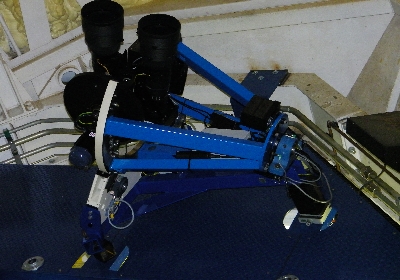
Assassin Picture of the Week
 | APOW Assassin Picture of the Week |
Active (Some Less, Some More) Galactic Nuclei with ASAS-SN
|
There are many kinds of objects that vary on the sky, and we already had an APOW about an extreme M-dwarf flare, several about ASAS-SN supernovae, and we also talked about dramatic AGN outburst in NGC 2617. Active Galactic Nuclei represent some of the most exotic conditions in the universe, and are one of the few observational signatures of the supermassive black holes (SMBHs) at the centers of all massive galaxies. Furthermore, there are observed correlations between SMBHs and their host galaxies, indicating that they influence each others' evolution with time. Yet, AGN are largely ignored in most current transient surveys, even though it is well known that both the broad line and continuum components of active galactic nuclei are time variable at all wavelengths. This variability enables, for example, the reverberation mapping (RM) technique for studying black hole masses and the structure of the broad line region. However, despite decades of research, the structure of AGN and the drivers of their variability are still poorly understood. As we have already discussed, ASAS-SN has already proven capable of finding rare outbursts and constraining the source of AGN variability. In case of NGC 2617 we (Shappee et al. 2013) have unambiguously showed that the X-ray variability preceded the UV-optical-IR changes, almost certainly due to irradiation and heating of the disk. This was the first case of a clear and convincing determination as to whether X-ray variability drives UV to NIR variability or the reverse. Encouraged by the reception of this discovery by the AGN community, in 2014, with six cameras deployed, we are planning to implement the ``ASAS-SN AGN Patrol.'' ASAS-SN will monitor all bright (V<17) AGN, quasars, and blazars, and produce publicly available light curves for these objects in real time. Here we show ASAS-SN light curves of several known AGN to illustrate our cadence and photometric precision with only two cameras. Stay tuned! |
Back to ASAS-SN page.
See previous APOWs:
Swift
Ultraviolet and Optical Follow-Up of ASASSN-13dl, Our Latest
Supernova
Dramatic AGN Outburst in NGC 2617
Two ASAS-SN Views of Orion Nebula
AAVSO Observations of Cataclysmic Variable ASASSN-13ck
Two ASAS-SN Supernovae in One Day!
Extreme M-dwarf Flare Observed by ASAS-SN;
Multiband photometric follow-up of ASASSN-13aw (SN 2013dr);
How ASAS-SN Discovers Supernovae: Case of Supernova ASASSN-13bb;
NGC 2617: Dramatic Seyfert Type Change;
ASASSN-13/SN 2013da: Our First Supernova Three Weeks Later;
This homepage is maintained by Ben Shappee, Tom Holoien and Kris Stanek.
Updated Mon Nov 11 13:45:54 EST 2013